Project
Studies in the spawning area of the European eel
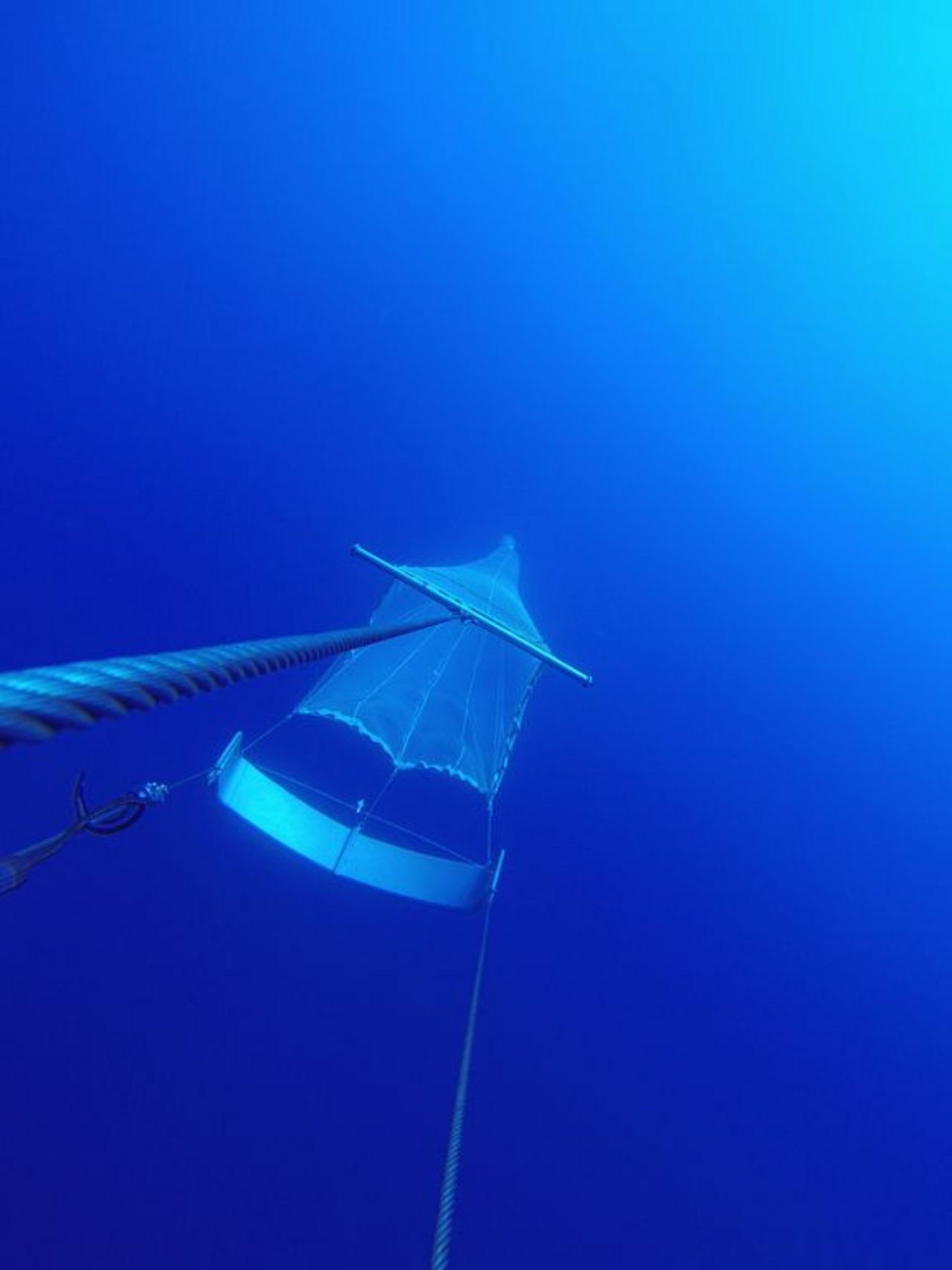
Studies on the reproductive biology of the European Eel in the central Sargasso Sea
The European eel is endangered. There are still large gaps in our knowledge about its reproductive biology. A better understanding of the processes in the spawning area is necessary to develop a better basis for the protection and sustainable management of the species.
Background and Objective
The life cycle of the eel is complex and essentially characterized by long migrations both in the ocean and in inland and coastal waters. The recruitment of glass eels has declined throughout the distribution area for more than three decades and the yellow and silver eel stocks have also decreased. Since about 15 years, the International Council for the Exploration of the Sea has stated that the eel stock is "outside safe biological limits". The clarification of the causes of the population decline is crucial for successful establishment of protective measures. However, this will only be possible if the complex life cycle is known and understood. However, there are still large gaps in our knowledge on the oceanic life stages and on the processes in the spawning area. Therefore, we study distribution and abundance of early developmental stages of the European eel in the central Sargasso Sea and we try to better localize the spawning area. By establishing a time series, the investigations will allow conclusions about the long-term effects of changing hydrographic conditions but also about the effects of management measures on distribution, abundance and survival of eel larvae in the Sargasso Sea. So far, glass eel recruitment at the European coast is the only measure for eel recruitment. However, from these data it cannot be deduced whether a) predominantly continental factors and hence reduced numbers of spawners are responsible for the decline in the eel population, or whether b) mortality of larvae during the two to three-year oceanic migration from the spawning area to the coasts has changed due to climatic factors. For this reason, surveys in the spawning area are essential. In addition, the abundance and distribution of leptocephalus larvae of other species is examined to obtain information on possible variation of the larvae community in the Sargasso Sea. The investigations in the spawning area of the eel contribute to a better understanding of the biology of the early larval stages. E. g., gut content studies on early-stage leptocephalus larvae could provide very valuable insights into food composition of the early developmental stages, which may also be highly relevant for the artificial reproduction of eel. The feeding of the youngest eel larvae so far is the core problem in the controlled breeding. Therefore, eel aquaculture is so far exclusively based on wild caught glass eels.
Approach
In the central Sargasso Sea (approximately in a range of about 70°W to 49°W and 24°N to 31°N) we investigate distribution and abundance of early developmental stages of the European eel (Anguilla anguilla). The studies allow us conclusions about the long-term effects of changing hydrographic conditions on distribution, abundance and survival of eel larvae in the Sargasso Sea. In the medium term, the data series will provide necessary information for a successful management of this endangered species. In addition, we study the abundance and distribution of leptocephalus larvae of other species to obtain information on the possible variation of the larval community in the Sargasso Sea. Together with the oceanographic data collected, the investigations of the ichthyoplankton with Isaac-Kidd Mid-Water Trawl (IKMT) will be used to better localize the spawning area of the eel and to characterize the relevant abiotic factors in the spawning area. The research in the Sargasso Sea was and will be conducted in cooperation with national and international partners.
Preliminary Results
In the years 2011, 2014, 2015, 2017 and 2023 we conducted research cruises in the central Sargasso Sea. Our results show that in 2011 compared to previous studies (1983, 1985), the proportion of larvae of the European (A. anguilla) and American eel (A. rostrata) in the entire leptocephalus community has decreased significantly. Although the exact causes of the decline in larval densities could not be determined in detail, our results can be seen as an indication that either fewer spawning fish reach the Sargasso Sea or that the survival of the youngest larval stages has decreased. The results so far give some indication that recruitment of glass eels at the continental coasts has decreased stronger than the larval densities in the spawning area.
In the frame of the research cruises we also investigated the behaviour of silver eels in the Atlantic Ocean and in the Sargasso Sea using archival pop-up satellite transmitters. This study for the first time provided data on the behaviour of eels in the spawning area for a period of up to three months. We documented a very stable pattern of diel vertical movements with amplitudes of about 300 meters and maximum diving depths of over 1200 meters. In the Sargasso Sea the eels used greater depths than in the more north-eastern areas of the Atlantic Ocean.
We were able to show that despite the sharp decline in the number of spawners, spawning still takes place across about 2000 km in the Sargasso Sea. Modeling their drift based on the distribution of the eel larvae in the Sargasso Sea produced a surprising result. According to the modeling results, most of the larvae remain south of the subtropical frontal zone and only a small number enter the Gulf Stream system. However, this proportion varied greatly between individual years, thus indicating that the spawning success is strongly dependent on oceanic and climatic factors that influence the transport of the larvae from the spawning area. Our investigations also showed that spawning of the European eel occurs mainly between January and March and that the growth of the eel larvae in the Sargasso Sea is about 0.3 mm per day.
Examinations of the intestinal contents of various leptocephalus larvae support the hypothesis that they mainly feed on marine snow.
In addition to the focus on eel larvae, new insights into a number of other organisms were also gained during the studies in the Sargasso Sea, partly in cooperation with other institutions, for example the occurrence and distribution of cephalopods, gelatinous zooplankton and sunfish larvae. E. g., in the frame of our research cruises, the Sargasso Sea was confirmed as a spawning area for the sunfish Ranzania laevis.
Thünen-Contact

Involved Thünen-Partners
Duration
Permanent task 2.2011 - 12.2027
More Information
Project status:
ongoing
Publications
- 0
Sundin J, Freese M, Marohn L, Blancke T, Hanel R (2023) Occurrence of the pugnose pipefish Bryx dunckeri in the Sargasso Sea. J Fish Biol: in Press, DOI:10.1111/jfb.15642
- 1
Hanel R, Marohn L, Westerberg H (2022) No new evidence for an Atlantic eels spawning area outside the Sargasso Sea. Sci Rep 12:11778, DOI:10.1038/s41598-022-14882-8
- 2
Marohn L, Schaber M, Freese M, Pohlmann J-D, Wysujack K, Czudaj S, Blancke T, Hanel R (2021) Distribution and diel vertical migration of mesopelagic fishes in the Southern Sargasso Sea - observations through hydroacoustics and stratified catches. Mar Biodiv 51:87, DOI:10.1007/s12526-021-01216-6
- 3
Lupše N, Cortesi F, Freese M, Marohn L, Pohlmann J-D, Wysujack K, Hanel R, Musilova Z (2021) Visual gene expression reveals a cone-to-rod developmental progression in deep-sea fishes. Mol Biol Evol 38(12):5664-5677, DOI:10.1093/molbev/msab281
- 4
Thys TM, Nyegaard M, Whitney JL, Ryan JP, Potter I, Nakatsubo T, Freese M, Hellenbrecht LM, Kelly R, Tsukamoto K, Shinohara G, Mowatt-Larssen T, Kubicek L (2020) Ocean Sunfish larvae: Detections, identification and predation. In: Thys TM, Hays GC, Houghton JDR (eds) The Ocean Sunfishes : Evolution, biology and conservation. Boca Raton: CRC Press
- 5
Miller MJ, Hanel R, Feunteun E, Tsukamoto K (2020) The food source of Sargasso Sea leptocephali. Mar Biol 167:57, DOI:10.1007/s00227-020-3662-6
- 6
Hays GC, Houghton JDR, Thys TM, Adams DH, Ahuir-Baraja AE, Alvarez J, Baptista M, Batista H, Baylina N, Bemis KE, Bemis WE, Caldera E, Carnevale G, Carson CD, Correia JP, Reis Costa P, Daly O, Davenport J, Dutton J, Freese M, et al (2020) Unresolved questions about the Ocean Sunfishes, molidae - A family comprising some of the world’s largest eleosts. In: Thys TM, Hays GC, Houghton JDR (eds) The Ocean Sunfishes : Evolution, biology and conservation. Boca Raton: CRC Press
- 7
Lüskow F, Neitzel P, Miller MJ, Marohn L, Wysujack K, Freese M, Pohlmann J-D, Hanel R (2019) Distribution and abundance of net-captured calycophoran siphonophores and other gelatinous zooplankton in the Sargasso Sea European eel spawning area. Mar Biodiv 49(5):2333-2349, DOI:10.1007/s12526-019-00971-x
- 8
Hellenbrecht LM, Freese M, Pohlmann J-D, Westerberg H, Blancke T, Hanel R (2019) Larval distribution of the ocean sunfishes Ranzania laevis and Masturus lanceolatus (Tetraodontiformes: Molidae) in the Sargasso Sea subtropical convergence zone. J Plankton Res 41(5):595-608, DOI:10.1093/plankt/fbz057
- 9
Miller MJ, Marohn L, Wysujack K, Bonhommeau S, Kuroki M, Freese M, Pohlmann J-D, Watanabe S, Blancke T, Weist P, Castonguay M, Westerberg H, Tsukamoto K, Hanel R (2019) Larval size-distributions of Ariosoma balearicum cryptic species during the March-April season in the Sargasso Sea Subtropical Convergence Zone. Environ Biol Fishes 102(10):1231–1252, DOI:10.1007/s10641-019-00900-8
- 10
Miller MJ, Marohn L, Wysujack K, Freese M, Pohlmann J-D, Westerberg H, Tsukamoto K, Hanel R (2019) Morphology and gut contents of anguillid and marine eel larvae in the Sargasso Sea. Zool Anz 279:138-151, DOI:10.1016/j.jcz.2019.01.008
- 11
Miller MJ, Westerberg H, Sparholt H, Wysujack K, Sorensen SR, Marohn L, Jacobsen MW, Freese M, Ayala DJ, Pohlmann J-D, Svendsen JC, Watanabe S, Andersen L, Moller PR, Tsukamoto K, Munk P, Hanel R (2019) Spawning by the European eel across 2000 km of the Sargasso Sea. Biol Lett 15:20180835, DOI:10.1098/rsbl.2018.0835
- 12
Musilova Z, Cortesi F, Matschiner M, Davies WIL, Suresh Patel J, Stieb SM, de Busserolles F, Malmstroem M, Tørresen OK, Brown CJ, Mountford JK, Hanel R, Stenkamp DL, Jakobsen KS, Carleton KL, Jentoft S, Marshall J, Salzburger W (2019) Vision using multiple distinct rod opsins in deep-sea fishes. Science 364(6440):588-592
- 13
Westerberg H, Miller MJ, Wysujack K, Marohn L, Freese M, Pohlmann J-D, Watanabe S, Tsukamoto K, Hanel R (2018) Larval abundance across the European eel spawning area: An analysis of recent and historic data. Fish Fisheries 19(5):890-902, DOI:10.1111/faf.12298
- 14
Westerberg H, Pacariz S, Marohn L, Fagerström V, Wysujack K, Miller MJ, Freese M, Pohlmann J-D, Hanel R (2018) Modeling the drift of European (Anguilla anguilla) and American (Anguilla rostrata) eel larvae during the year of spawning. Can J Fish Aquat Sci 75(2):224-234, DOI:10.1139/cjfas-2016-0256
- 15
Poulsen JY, Miller MJ, Sado T, Hanel R, Tsukamoto K, Miya M (2018) Resolving deep-sea pelagic saccopharyngiform eel mysteries: Identification of Neocyema and Monognathidae leptocephali and establishment of a new fish family "Neocyematidae" based on larvae, adults and mitogenomic gene orders. PLoS One 13(7):e0199982, DOI:10.1371/journal.pone.0199982
- 16
Lischka A, Piatkowski U, Hanel R (2017) Cephalopods of the Sargasso Sea: distribution patterns in relation to oceanography. Mar Biodiv 47(3):685-697, DOI:10.1007/s12526-016-0629-4
- 17
Kuroki M, Marohn L, Wysujack K, Miller MJ, Tsukamoto K, Hanel R (2017) Hatching time and larval growth of Atlantic eels in the Sargasso Sea. Mar Biol 164:118, DOI:10.1007/s00227-017-3150-9
- 18
Durif CM, Bonhommeau S, Briand C, Browman HI, Castonguay M, Daverat F, Dekker W, Diaz E, Hanel R, Miller M, Moore A, Paris C, Skiftesvik AB, Westerberg H, Wickström H (2017) Whether European eel leptocephali use the Earth’s magnetic field to guide their migration remains an open question. Current Biol 27:R998-R1000, DOI:10.1016/j.cub.2017.08.045
- 19
Miller MJ, Bonhommeau S, Munk P, Castonguay M, Hanel R, McCleave JD (2015) A century of research on the larval distributions of the Atlantic eels: a re-examination of the data. Biol Rev Cambridge Philos Soc 90(4):1035-1064, DOI:10.1111/brv.12144
- 20
Wysujack K, Westerberg H, Aarestrup K, Trautner J, Kurwie T, Nagel F, Hanel R (2015) The migration behaviour of European silver eels (Anguilla anguilla) released in open ocean conditions. Mar Freshwater Res 66(2):145-157, DOI:10.1071/MF14023
- 21
Hanel R, Stepputtis D, Bonhommeau S, Castonguay M, Schaber M, Wysujack K, Vobach M, Miller MJ (2014) Low larval abundance in the Sargasso Sea: new evidence about reduced recruitment of the Atlantic eels. Naturwiss 101(12):1041-1054, DOI:10.1007/s00114-014-1243-6
- 22
Miller MJ, Stepputtis D, Bonhommeau S, Castonguay M, Schaber M, Vobach M, Wysujack K, Hanel R (2013) Comparisons of catches of large leptocephali using an IKMT and a large pelagic trawl in the Sargasso Sea. Mar Biodiv 43(4):493-501, DOI:10.1007/s12526-013-0170-7

![[Translate to English:] [Translate to English:]](/media/_processed_/2/9/csm_Embryo-Exp_Gelege_9F_dpf5-200513111619_c8534a8199.jpg)
![[Translate to English:] [Translate to English:]](/media/_processed_/2/9/csm_Embryo-Exp_Gelege_9F_dpf5-200513111619_9027994d44.jpg)
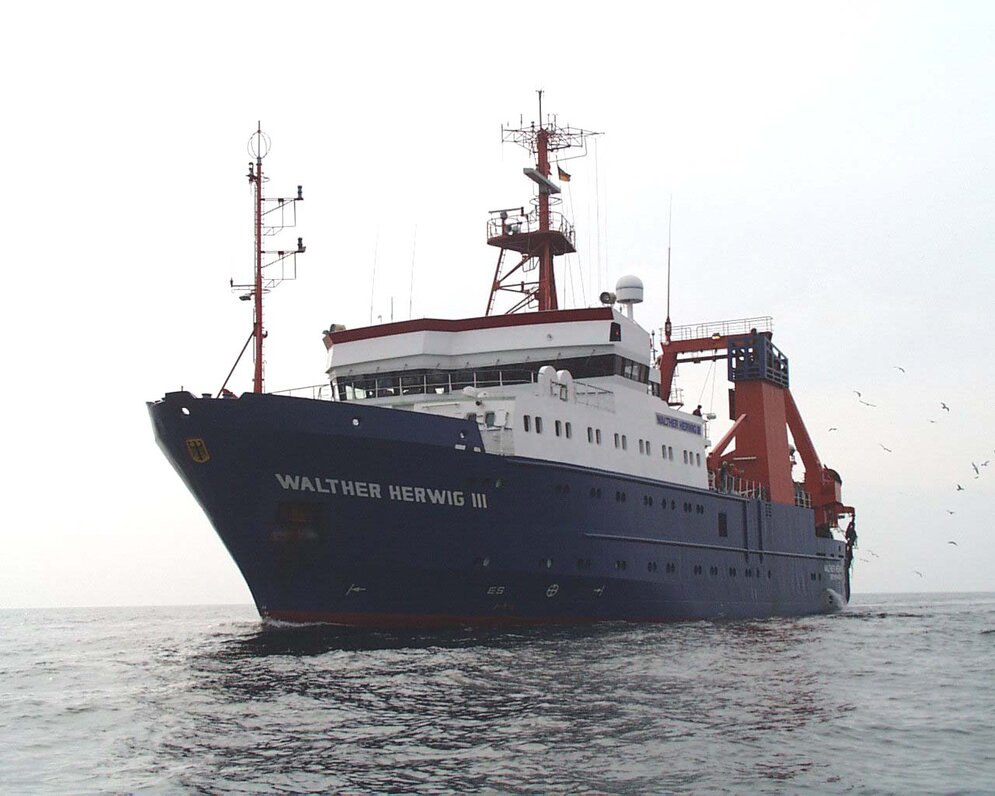
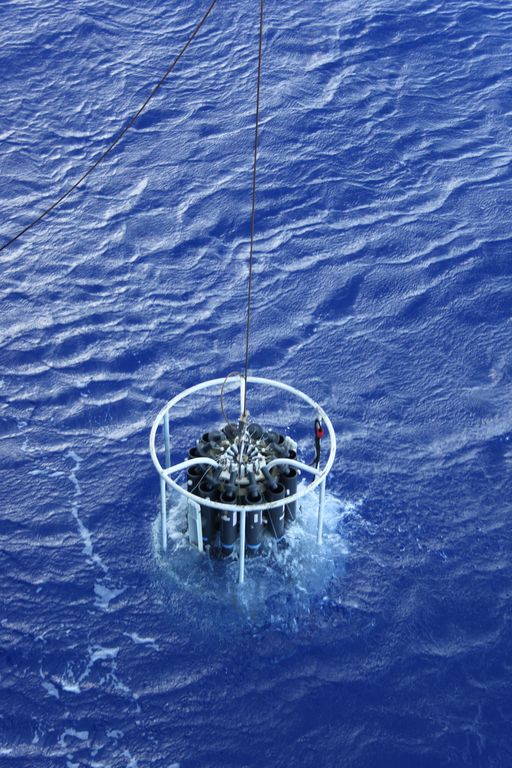
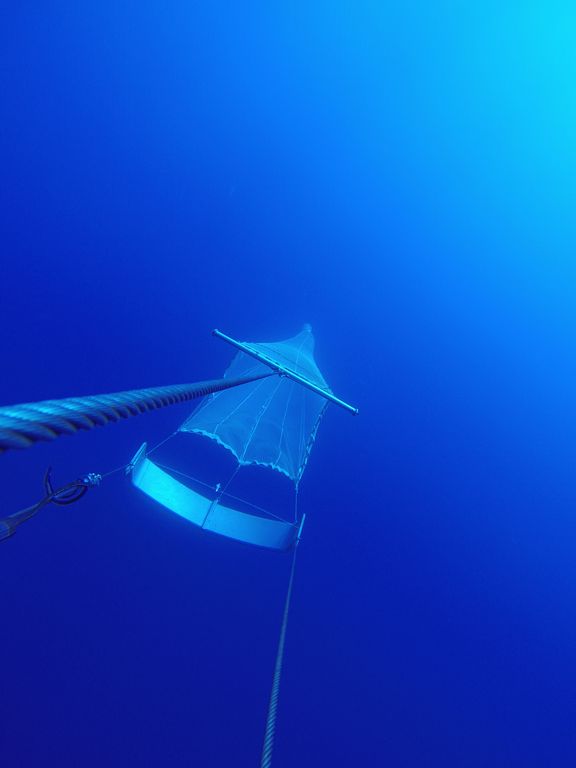
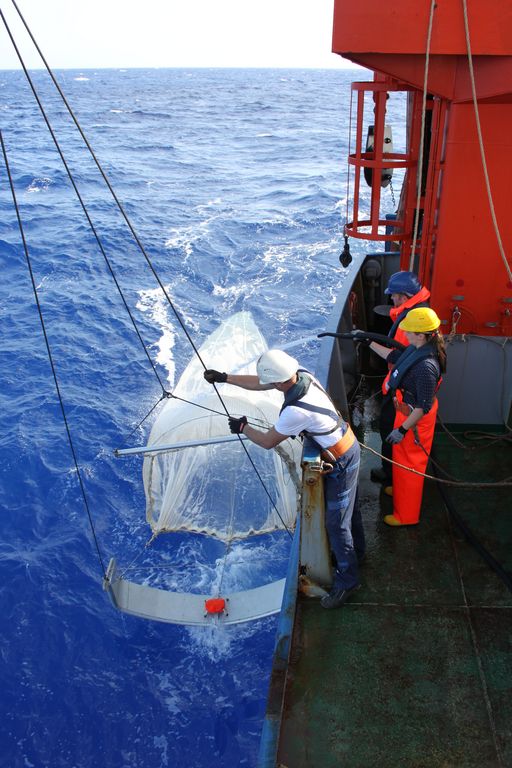
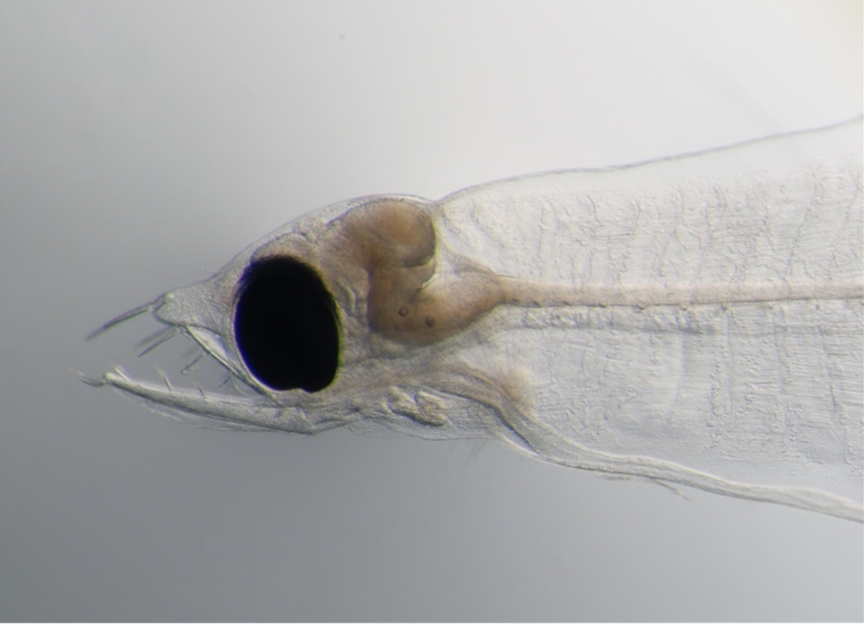
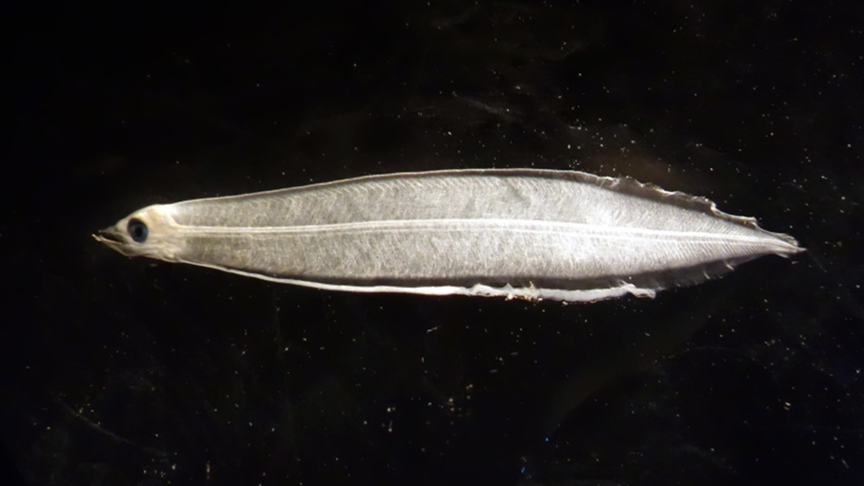
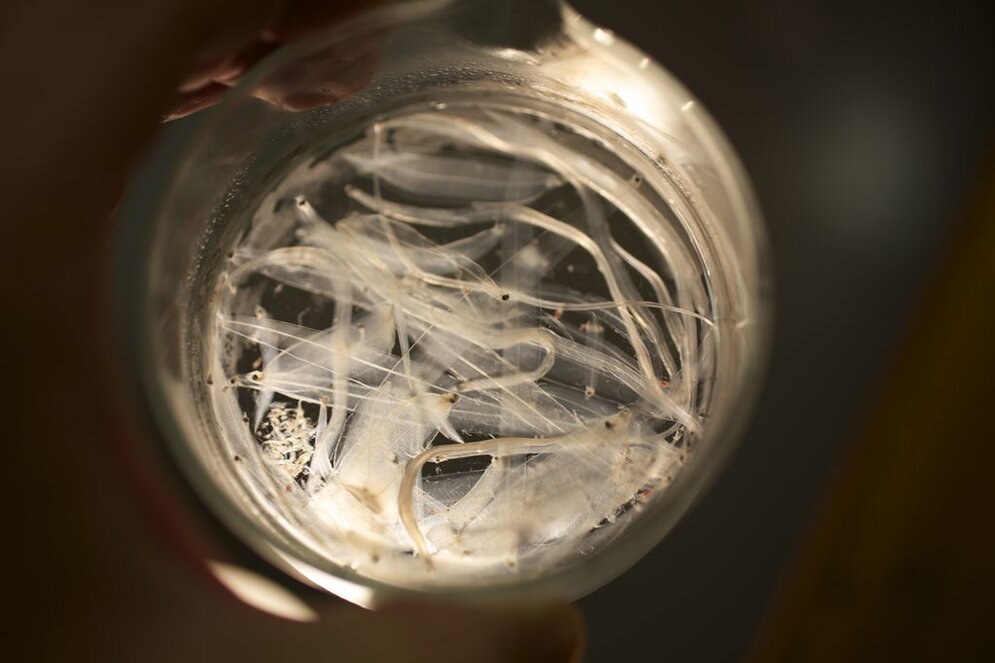
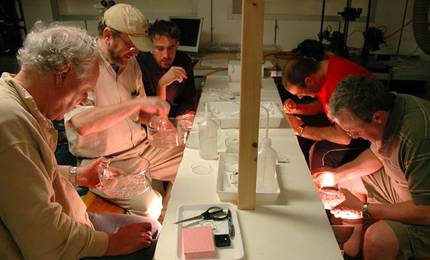
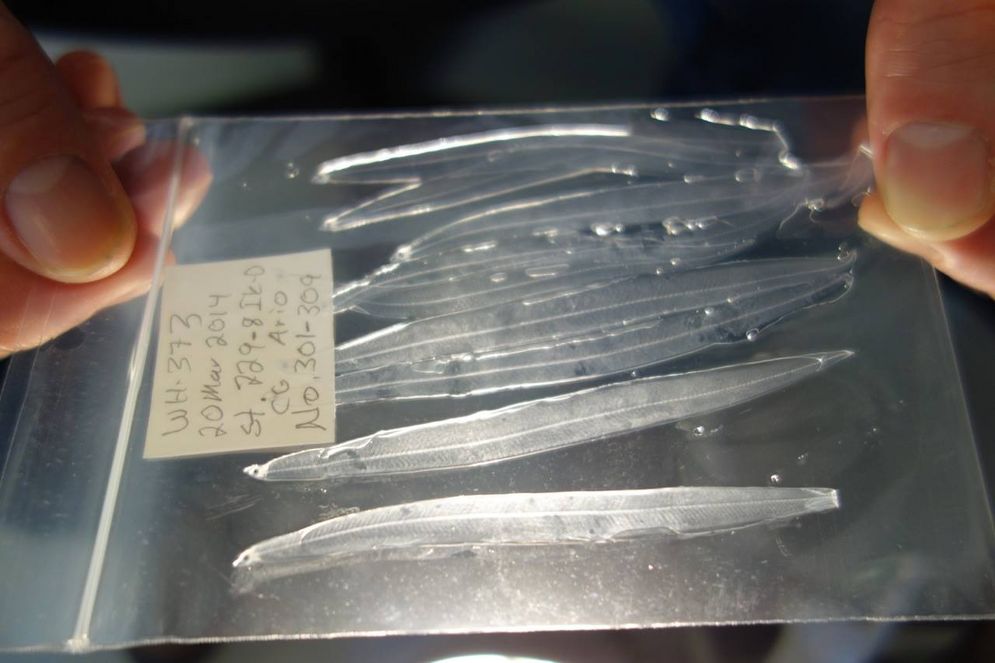
![[Translate to English:] Logo des Bundesministerium für Ernährung und Landwirtschaft](/media/allgemein/logos/BMEL_Logo.svg)